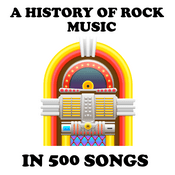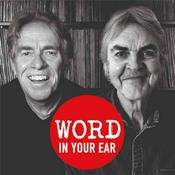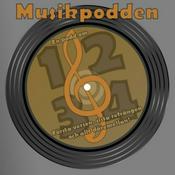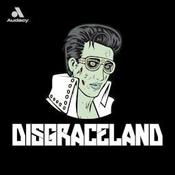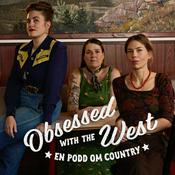'60s '70s '80s - Warm, Candid, Classic, Rock Interviews with Music Legends - A BREATH OF FRESH AIR
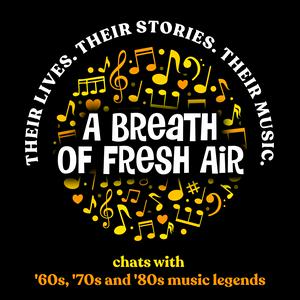
212 avsnitt

Ian Gillan: The Legendary Voice of Deep Purple- His Story
2025-12-24 | 52 min.
In this episode, I finally get to sit down with a man I’ve been chasing for more than four years — the incomparable Ian Gillan of Deep Purple. If you grew up on classic rock the way I did, you already know exactly what a monumental figure he is. Ian’s the powerhouse vocalist who helped define the sound of hard rock, pushed the limits of vocal technique, and gave us some of the most enduring songs in modern music history.But this isn’t your typical rock-star chat. Ian opens up about everything — from hearing Elvis for the first time and singing as a boy soprano to scraping by with half-broken instruments, makeshift drum kits, and a single pair of trousers he rotated with Roger Glover. He talks candidly about those early club days in Germany, the magic of the transistor radio, and how the surf-rock craze swept through London in the mid-60s.We dive right into the evolution of Episode Six, the songwriting partnership with Roger Glover, the birth of Deep Purple’s legendary hard-rock sound, and the incredible creative chemistry that powered albums like In Rock, Fireball, and Machine Head. Ian shares what it was really like inside the whirlwind of fame — the money, the mayhem, the distractions, the growing pains, and the moment he realised the band’s unity was starting to fracture.He also reflects on the pressures of success, the importance of staying true to your artistic identity, and why he ultimately walked away from one of the biggest bands in the world. It’s raw, honest, funny, nostalgic, and full of the kind of stories only Ian Gillan can tell.If you love Deep Purple, classic rock history, behind-the-scenes stories, or simply a great conversation with a remarkably self-aware and entertaining storyteller, this episode is going to be a treat.Tune in and step inside the life, the voice, and the unstoppable spirit of Ian Gillan.To learn more about Ian head to:Ian Gillan (official site) www.gillan.comDeep Purple – official band site deep-purple.com deep-purple.comDeep Purple – Ian Gillan’s page on band site deep-purple.com/band/ian-gillan/ deep-purple.com

Patti LaBelle: The Untold Story of the Godmother of Soul
2025-12-17 | 52 min.
Born Patricia Louise Holte in 1944 in Southwest Philadelphia, Pennsylvania, the woman we know as Patti LaBelle was raised in a large family as the second-youngest of five children. Her father worked on the railroad and performed in clubs, while her mother was a domestic worker. From a young age, Patti found solace and purpose in music — she joined her church choir at age 10 and by 12 was singing solo. Her early life wasn’t easy. The marriage of her parents was troubled, and after her parents separated when she was 12, she experienced deep personal trauma. Yet despite hardship, she held onto music — both for comfort and as an outlet — listening to jazz, R&B and gospel as she grew up.In her mid-teens Patti began dreaming of making music beyond the church. By 1960, she formed a girl group called The Ordettes with friends at school. The next year members changed and the group evolved into Patti LaBelle and the Bluebelles — soon to become simply Labelle in the '70s. The Bluebelles enjoyed moderate success: in '62 they scored a Top-20 hit. Later, they found acclaim covering classics like “Somewhere Over the Rainbow.” In the '70s Labelle’s sound evolved. The group embraced funk, soul, and rock — culminating in the '74 smash hit Lady Marmalade. The song and its style cemented their place in music history.But amidst growing fame, internal tensions and changing musical landscapes led to the group’s split in '77. That difficult moment became the launchpad for Patti’s solo journey. Patti’s debut solo album, simply titled Patti LaBelle, came out in '77. Her true breakthrough came mid-'80s. A string of hits turned Patti into a household name. 1986’s album Winner in You — featuring the duet On My Own with Michael McDonald — topped U.S. charts and solidified her commercial success.In the '90s Patti continued to release albums. She earned a second and sold tens of millions of records worldwide.Patti’s talents reach far beyond singing. Over the decades she’s dabbled in acting and is also a successful author. Her 1996 memoir Don't Block the Blessings: Revelations of a Lifetime gives insight into her hardships, faith and perseverance. She later penned cookbooks, launched a food brand with frozen comfort foods, and her signature sweet-potato pies.Today Patti LaBelle shows no signs of slowing down. In 2024, she marked her 80th birthday by announcing a brand new album titled 8065 — a tribute to her 80 years alive and 65 years in show business. She’s also hit the road with the “8065 Celebration Tour,” which will take her to audiences around the world — including stops planned for Australia and New Zealand early in 2026.At 81, Patti remains a powerhouse performer. Her message to fans? Age is just a number — and she’s proof. Reflecting on her decades-long career, she recently said she feels blessed to still be “standing” — able to sing, walk, and create. Her fans, across generations, couldn’t agree more.From “The Ordettes” to Stardom, this episode details the rise and rise of the legend we knowas Patti Labelle.Catch her on tour here:Jan 16 Rancho Mirage, CA, United StatesJan 17 Thunder Valley Casino Resort Lincoln, CA, Jan 20 Riverside Theatre Perth, AustraliaJan 22 Palais Theatre St Kilda, Jan 24 Adelaide Entertainment Centre Jan 25 Sydney Event Centre Jan 28 The Star Gold Coast Jan 30 The Civic Auckland, New ZealandFeb 12 Jacksonville, FL, Feb 13 Charlotte, NC, United StatesFeb 15 St Louis, MOFeb 19 New OrleansFeb 20 Houston, TXFeb 22 Fort Worth, TXMar 14 Westbury South, NY

Remembering Skyhooks' Bob Starkie: His Life and Legacy
2025-12-10 | 52 min.
Bob “Bongo” Starkie was one of Australian rock’s most colourful and enduring guitarists — a player whose sharp riffs, cheeky humour, and rhythmic pulse powered Skyhooks from Melbourne cult heroes to national icons. Bongo's journey before, during, and after the band reflects a musician who never lost his spark. Starkie passed away on 29 November 2025, prompting an outpouring of affection from fans and fellow artists who saw him as a vital thread in the fabric of Australian music.Growing up in Melbourne, Bob was drawn to guitar early and spent his young adulthood shaping his craft in pubs, clubs, and rehearsal rooms. He played in a string of local outfits where he built a reputation for clean, punchy rhythm work and an upbeat stage presence. Even before he had a national profile, musicians around the city knew him as reliable, talented, and quietly charismatic — the sort of guitarist other bands wanted to poach.Starkie joined Skyhooks in 1973, stepping into a band that would become one of Australia’s most influential rock acts. Skyhooks arrived like a shockwave: irreverent, glammy, theatrical, and unmistakably Australian.Bob’s guitar style became a pillar of their sound — tight, melodic, rhythmic, and full of playful swagger. His work powered hits from Living in the ’70s and Ego Is Not a Dirty Word, including classics like “Horror Movie,” “You Just Like Me ’Cause I’m Good in Bed,” “Ego Is Not a Dirty Word,” and “Women in Uniform.”Onstage, Bob brought a grounded confidence that balanced the band’s wilder theatrical edges. He wasn’t the loudest personality in Skyhooks, but his presence was essential — the rhythmic engine room that kept the glitter-covered chaos driving forward.After the band’s original era wound down, Starkie remained a working musician through and through. He played in a variety of groups, collaborated widely, and stayed active across Melbourne’s music scene.Eventually, he took on a role that fans adored: fronting Bob Starkie’s Skyhooks Show, a touring act that kept the band’s catalogue alive with humour, heart, and authenticity. Unlike a tribute act, this was the real thing — Starkie playing the music he helped make famous. Audiences loved him for it, and the shows often became celebrations shared across generations.He also contributed frequently to interviews, documentaries, and retrospectives, offering his memories with warmth and clarity. Starkie took pride in the band’s legacy and made sure the stories — and the songs — stayed alive.In his final years, Starkie continued performing and engaging with the music community whenever his health allowed. His death led to a wave of tributes across Australia. Artists, fans, music journalists, and former bandmates remembered him as a generous, grounded musician who gave everything to his craft and never lost his sense of fun.Bob “Bongo” Starkie leaves behind more than riffs and records — he leaves behind decades of memories, laughter, friendship, and the unmistakable sound of Skyhooks, a band that helped Australia find its own voice in rock ’n’ roll. From his early days in Melbourne pubs to his final shows proudly flying the Skyhooks flag, he stayed true to the music and the people who loved it.His legacy will continue to ring out every time a Skyhooks classic blasts through a speaker.In this episode we explore Bongo's musical life, listening to hin tell his own story, in his own words. Whether you're already familar with the band Skyhooks, or just discovering them for the first time, I'm sure you're going to enjoy hearing Bob's story.For more information, comments or feedback, head to ny website https://www.abreathoffreshair.com.au

Gladys Knight & the Pips: The William Guest Story You’ve Never Heard
2025-12-03 | 52 min.
Gladys Knight & the Pips hold an essential place in American music history, but within the ensemble’s smooth choreography and signature harmonies, one member often stood out for his quiet consistency, unmistakable stage presence, and velvet-textured vocals: William Guest. His contributions helped shape the unmistakable sound of the group, even if he wasn’t always the one in the spotlight.The story begins in Atlanta, Georgia, where Gladys Knight was already turning heads with her powerhouse vocals as a child. In 1952, after winning a televised talent competition, she joined forces with her brother Merald “Bubba” Knight and cousins Edward Patten and William Guest. The four formed a family group called The Pips, named after another cousin, James “Pip” Woods. Even in the early days, Guest’s natural musicality was obvious. His voice had a warm, fluid tone, and he possessed a dancer’s instinct — smooth, rhythmic, and always in total sync with the group.Throughout the '50s and early ’60s, The Pips worked tirelessly, playing hometown shows and steadily building a reputation for their professionalism and perfectly blended harmony parts. William was a key part of the group’s vocal chemistry. While Gladys carried the lead, it was William, Edward, and Bubba who built the lush vocal bed the group became famous for. Their first hit, “Every Beat of My Heart,” arrived in '61 and put the group on the national radar. But the real transformation came in '66 when they signed with Motown Records. Surrounded by giants of the era, Gladys Knight & the Pips carved out their own lane. What many don’t realise is just how physically demanding the group’s work was during the Motown years. William wasn’t simply a backing singer — he was part of the group’s visual identity. His dance lines with Bubba and Edward became part of the group’s signature.In '73, after moving to Buddah Records, the group hit an extraordinary creative stride. “Midnight Train to Georgia,” “Best Thing That Ever Happened to Me,” and “I’ve Got to Use My Imagination” defined an era, and William Guest was right there at the heart of it. Behind the scenes, he was known as a gentle, steady soul — humble, thoughtful, and devoted to the craft. His professionalism was legendary: he rehearsed meticulously, respected the group’s tight vocal blend, and helped maintain the discipline that kept the band performing at an elite level for decades.The group continued releasing hits through the ’70s and ’80s, including “Love Overboard,” which won a Grammy and introduced the group to a new generation. By the time they retired in '89, they had become one of the longest-running and most respected vocal groups in American music.William Guest didn’t step away from music after the group’s farewell. Instead, he poured his energy into nurturing new talent. He co-founded the Crew Records label and later the Gladys Knight & the Pips Foundation, focusing on youth development and musical education — a reflection of his belief in giving young performers the kind of opportunities he’d had as a child.When Gladys Knight & the Pips were inducted into the Rock and Roll Hall of Fame in '96, it was a moment that finally spotlighted the collective contributions of all four members — including the man whose steady artistry helped carry the group across four decades.William Guest passed away in 2015. His sister in law, author Lady Dhyana Ziegler spent years interviewing him and recently published his story " Midnight Train From Georgia" It speaks of his voice, his movement, and his unwavering commitment to excellence that helped shape one of the greatest soul ensembles of all time . Lady D joins us today to share the story of William Guest whose influence lives on in the countless R&B vocal groups who model themselves on the Pips’ precision and style today.

Jimmy Cliff: The Life, Legacy & Music of a Reggae Icon
2025-11-26 | 52 min.
Jimmy Cliff, born James Chambers on 30 July 1944 in Somerton, St. James Parish, Jamaica, emerged from humble beginnings to become one of reggae’s most beloved and influential figures. His parents worked modest jobs on a rural farm, and from a young age, Cliff showed a natural gift for singing. As a child, he sang in his church choir; by his early teens he had moved with his family to Kingston, determined to carve out a career in music. At just 14 years old, Cliff scored his first hit with the self-penned single “Hurricane Hattie”, a song that nods to his own miraculous arrival during a storm. With his early success in Jamaica, he soon caught the attention of producer Leslie Kong, whose Beverly’s label would provide a platform for Cliff to record more material and refine his style. In 1965, Cliff followed an invitation from Chris Blackwell, founder of Island Records, to move to the United Kingdom. While in London, he experimented with combining ska, rocksteady, and soul influences, earning recognition beyond Jamaica. Over the late 1960s, he released key tracks like “Wonderful World, Beautiful People” and “Vietnam”, the latter gaining admiration for its protest message. A turning point in his career—and in the global recognition of reggae—came in 1972 with the film The Harder They Come, directed by Perry Henzell. Cliff starred as Ivan Martin, a small-time musician who is forced into a life of crime. The movie’s gritty realism and its all-star soundtrack, featuring Cliff’s vocals on songs such as “Many Rivers to Cross”, “Sitting in Limbo”, and the title track itself, resonated widely. The film is often credited with helping bring reggae to a wider international audience. Though Cliff continued to release music through the 1970s, he also explored his spiritual side—spending time in Africa and embracing Islam, as well as other spiritual practices. In the 1980s, he returned to a more mainstream sound and released Cliff Hanger, winning his first Grammy Award in 1985. The success continued: in 1993, his cover of Johnny Nash’s “I Can See Clearly Now” for the Cool Runnings movie soundtrack became a global hit, reintroducing his voice to a new generation. Throughout his life, Cliff recorded prolifically—producing over 30 albums. His later work continued to reflect his commitment to social justice: in 2012, his album Rebirth, co-produced with Tim Armstrong of Rancid, won him another Grammy. In 2022, he released Refugees, a deeply humanitarian record inspired by global crises, which he used to voice solidarity with displaced people. Jimmy Cliff’s influence extended far beyond his singing. He collaborated with a wide array of artists—from the Rolling Stones to Annie Lennox to Paul Simon—and his songs were covered by many others, underlining the universal appeal of his message. In recognition of his impact, he was inducted into the Rock & Roll Hall of Fame in 2010. In Jamaica, he was honored with the Order of Merit, one of the nation’s highest accolades. On a personal level, Cliff was intensely private. He had several children, and his longtime partner, Latifa Chambers, survived him. His wife announced his passing on 24 November 2025, revealing that he died following a seizure and pneumonia. Jimmy Cliff’s legacy is defined not just by his music, but by the spirit it carried: hope, resistance and unity. From his rural Jamaican beginnings to global stages, he remained true to his message and his people. In his words, he always believed in crossing to the other side—to higher ground. Now, his journey has come full circle, but his songs continue to carry that same power to uplift, to challenge, and to heal.To learn more about Jimmy Cliff head to his website https://www.jimmycliff.com/
Fler podcasts i Musik
Trendiga poddar i Musik
Om '60s '70s '80s - Warm, Candid, Classic, Rock Interviews with Music Legends - A BREATH OF FRESH AIR
Lyssna på '60s '70s '80s - Warm, Candid, Classic, Rock Interviews with Music Legends - A BREATH OF FRESH AIR, DJ 50 Spänn och många andra poddar från världens alla hörn med radio.se-appen

Hämta den kostnadsfria radio.se-appen
- Bokmärk stationer och podcasts
- Strömma via Wi-Fi eller Bluetooth
- Stödjer Carplay & Android Auto
- Många andra appfunktioner
Hämta den kostnadsfria radio.se-appen
- Bokmärk stationer och podcasts
- Strömma via Wi-Fi eller Bluetooth
- Stödjer Carplay & Android Auto
- Många andra appfunktioner


'60s '70s '80s - Warm, Candid, Classic, Rock Interviews with Music Legends - A BREATH OF FRESH AIR
ladda ner appen,
börja lyssna.

